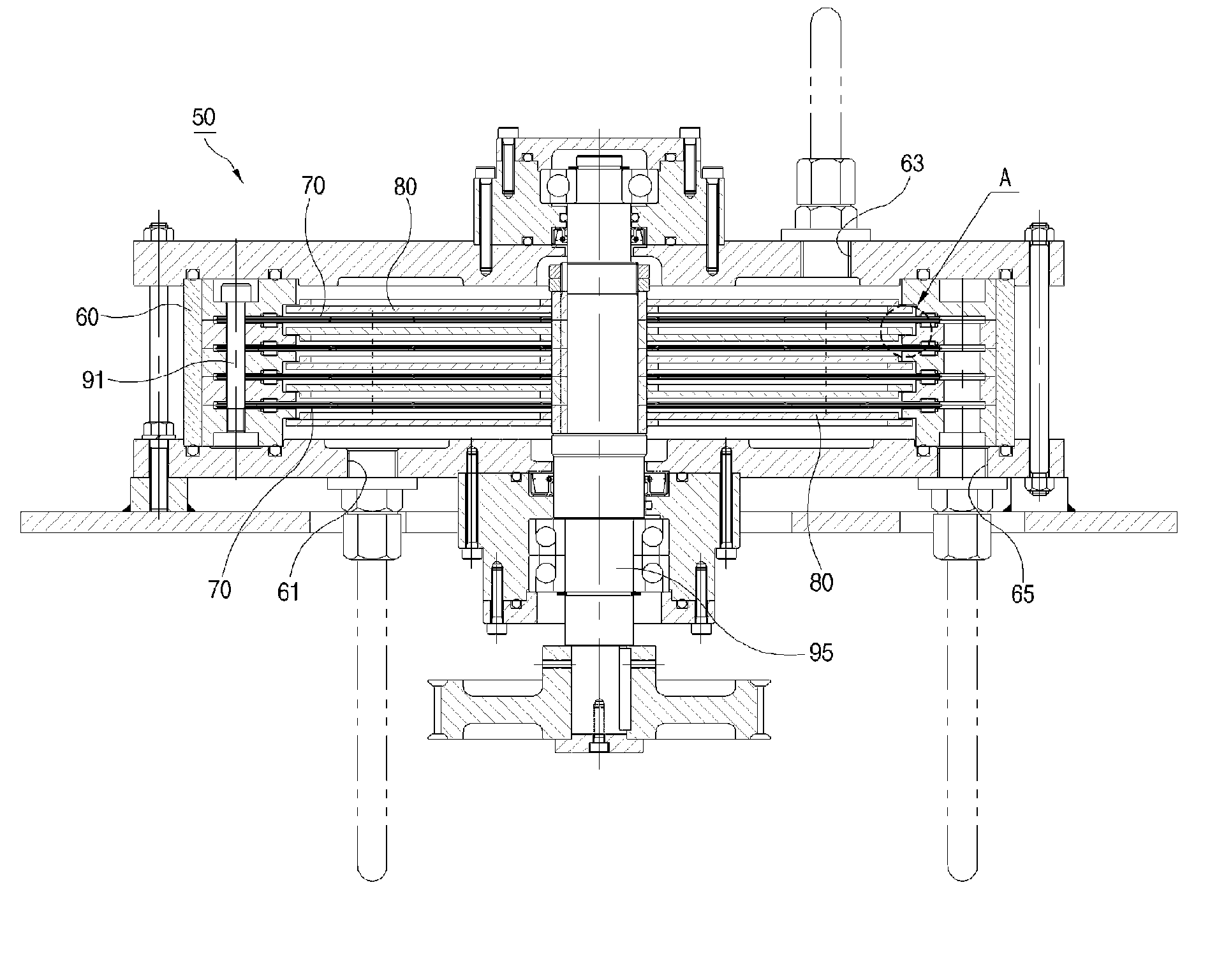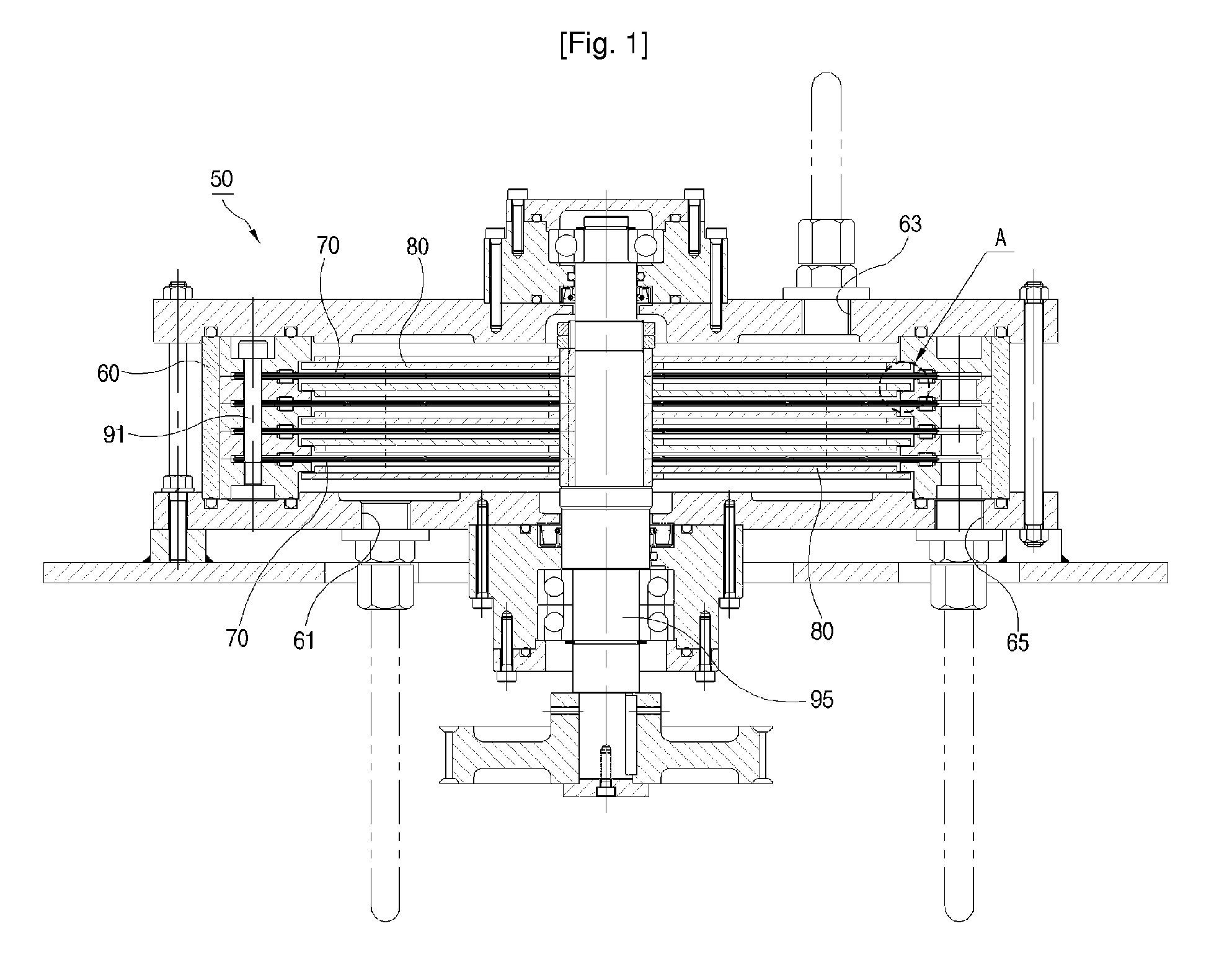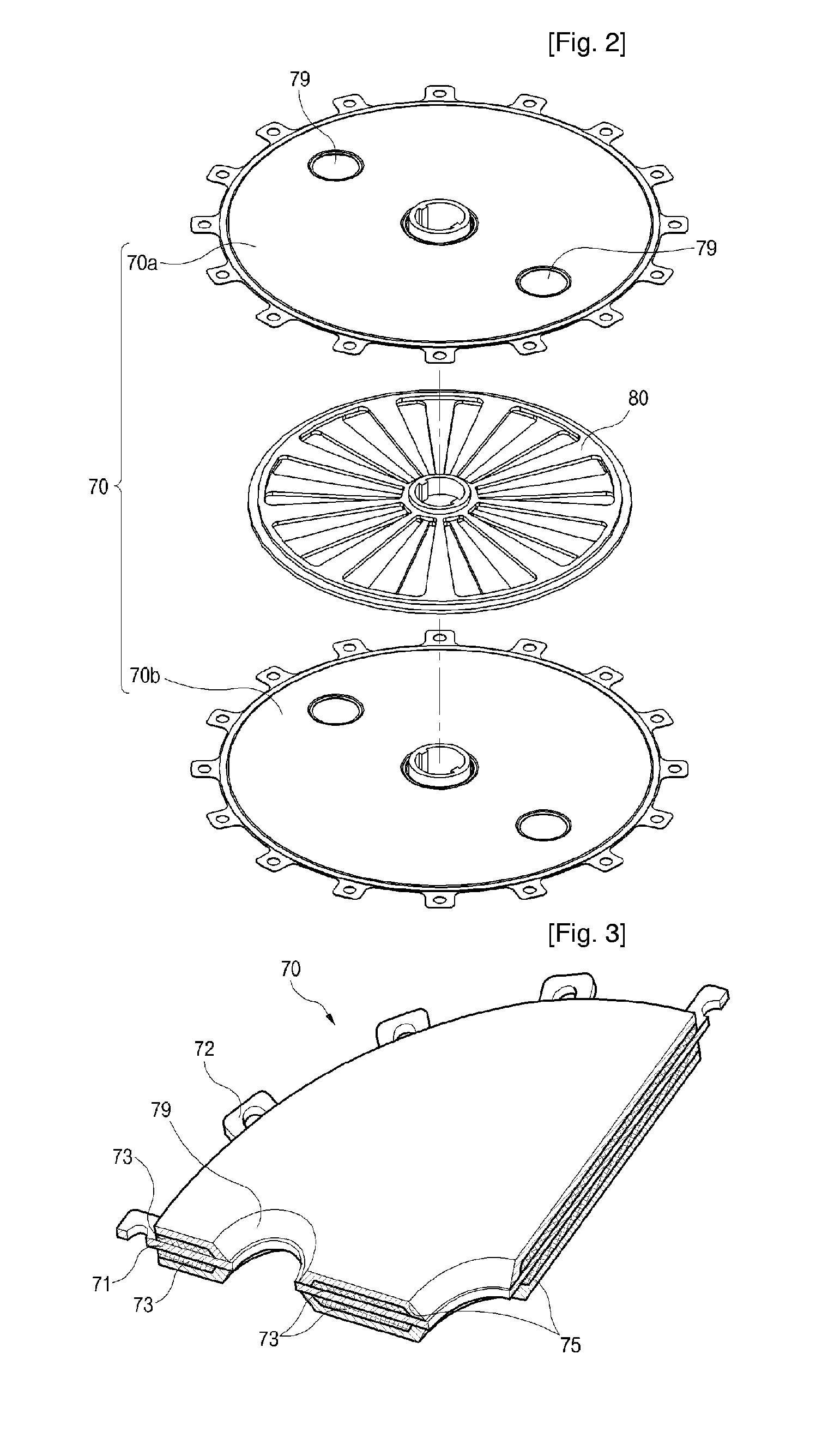Rotor for generating vortex water flow, and filtering apparatus employing the same
a technology of vortex water and rotor, which is applied in the direction of wind motor with parallel air flow, water/sewage treatment bu osmosis/dialysis, wind motor with perpendicular air flow, etc. it can solve the problems of increasing manufacturing costs, affecting the efficiency of filtering apparatus in precessing polluted water, and affecting the separation of liquid(or gas) solids. the effect of the separation membran
- Summary
- Abstract
- Description
- Claims
- Application Information
AI Technical Summary
Benefits of technology
Problems solved by technology
Method used
Image
Examples
first embodiment
[0060]FIG. 4 is a view showing the rotor for generating vortex water flow according to the present invention, and FIG. 5 is an enlarged view of part A in FIG. 1 including the cross section along the line I-I of FIG. 18.
[0061] The rotor 100 for generating vortex water flow according to the first embodiment of the present invention is comprised of a first rotor 110 and a second rotor 120. An assembly ring 150 assembled with the rotational shaft 95 of the filtering apparatus 50 is prepared at the central area of the rotor 100, and the assembly ring 150 is assembled with the first rotor 110 and the second rotor 120. Accordingly, the rotor 100 assembled with the rotational shaft 95 through the assembly ring 150 is rotated by the rotational shaft 95 when the rotational shaft 95 is rotated.
[0062] The first rotor 110 has a plurality of first blades 111 extended from the rotational axis in the radial direction thereof. A first assembly portion 115 having a shape of a ring assembled with the...
second embodiment
[0068] In the second embodiment, the first blades 211 and the second blades 221 are disposed at positions different from each other in the circumferential direction around the rotational axis of the rotor 200. More particularly, the first blades 211 and the second blades 221 have the same shape and width with each other, and only the arranged positions thereof are different.
[0069] As shown in FIGS. 8 and 9, the first blades 211 and the second blades 222 are partially overlapped with each other, in other words, about half of the width thereof is overlapped. According to such a construction, as shown in FIG. 10, the position that the vortex water is generated by the upper blades 211 at the front area and the rear area in the rotational direction is different from the position that the vortex water is generated by the lower blades 221 at the front and the rear area in the rotational direction. Thus, more complex vortex water flow can be generated effectively in comparison with the case...
third embodiment
[0070]FIG. 11 is a view showing the rotor for generating vortex water flow according to the present invention, and FIG. 23 is a cross sectional view of FIG. 11 along the line II-II.
[0071] In the third embodiment, the first blades 311 and the second blades 321 are disposed at positions different from each other in the circumferential direction around the rotational axis of the rotor 300, and simultaneously, are distanced from each other in the circumferential direction. Furthermore, the first blades 311 and the second blades 321 are so disposed as to be distanced equally from each other in the circumferential direction. The width and the shape of the first blades 311 and the second blades 321 are same with each other. Therefore, as shown in FIG. 12, the first blades 311 and the second blades 321 are arranged in a zigzag manner.
[0072] According to such a construction, the vortex water flow as shown in FIG. 13 is formed. As shown in FIG. 13, the respective blades 311 and 321 generate ...
PUM
| Property | Measurement | Unit |
|---|---|---|
| Size | aaaaa | aaaaa |
| Shape | aaaaa | aaaaa |
| Width | aaaaa | aaaaa |
Abstract
Description
Claims
Application Information
 Login to View More
Login to View More - R&D
- Intellectual Property
- Life Sciences
- Materials
- Tech Scout
- Unparalleled Data Quality
- Higher Quality Content
- 60% Fewer Hallucinations
Browse by: Latest US Patents, China's latest patents, Technical Efficacy Thesaurus, Application Domain, Technology Topic, Popular Technical Reports.
© 2025 PatSnap. All rights reserved.Legal|Privacy policy|Modern Slavery Act Transparency Statement|Sitemap|About US| Contact US: help@patsnap.com



